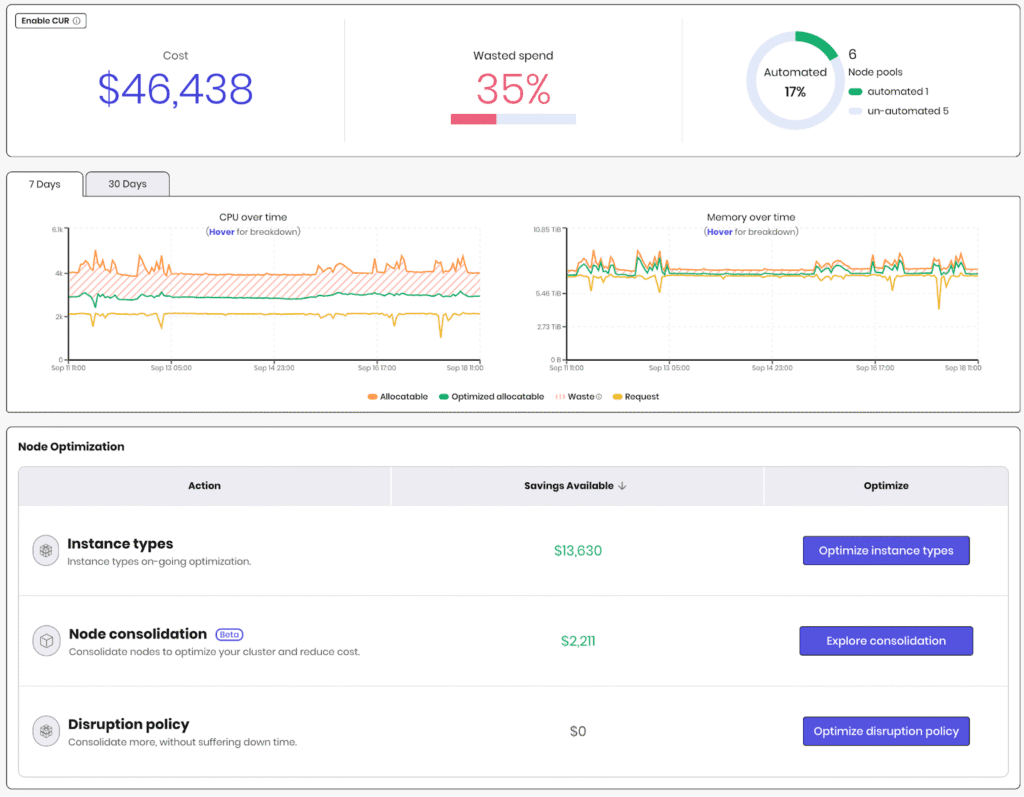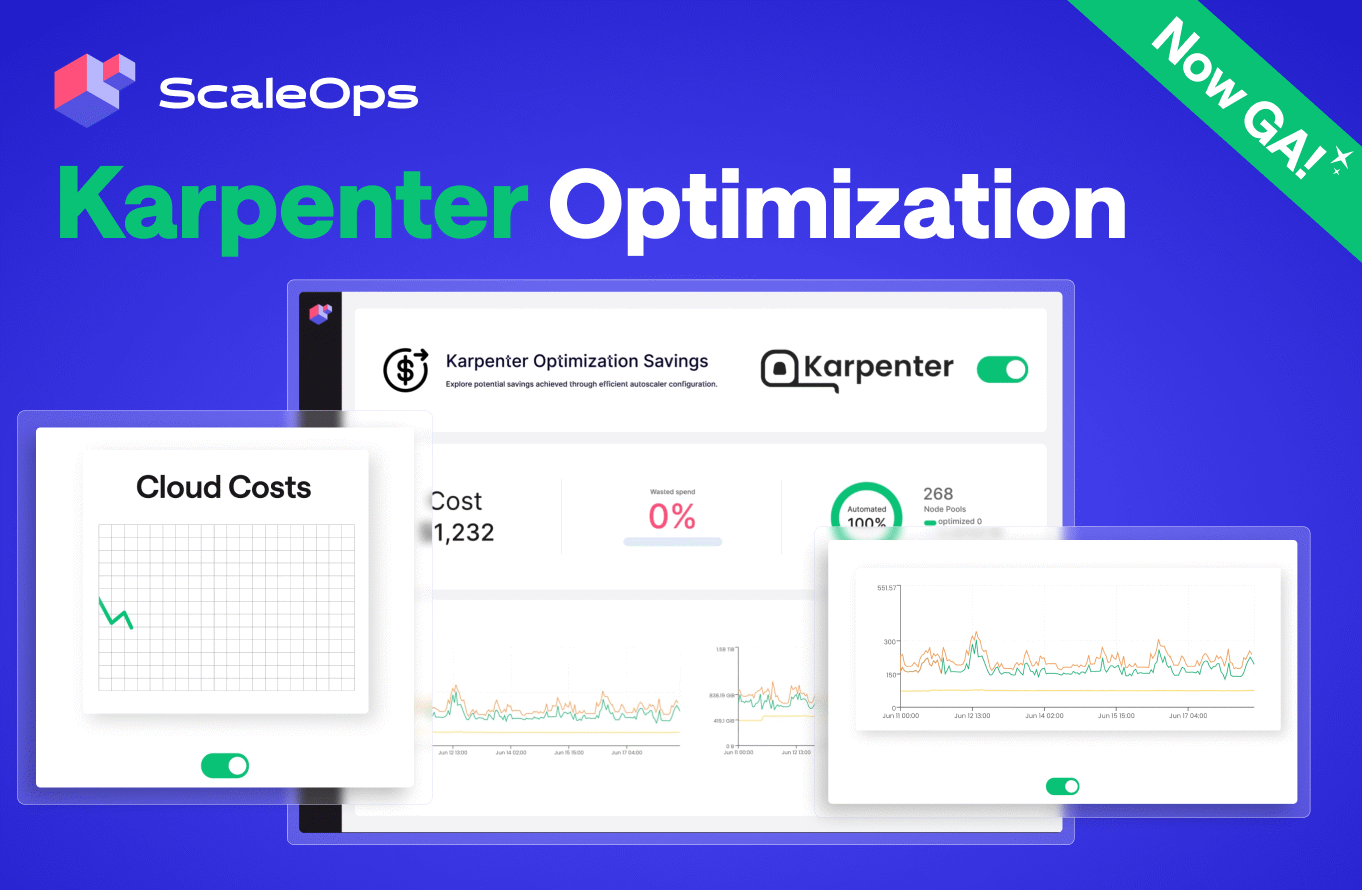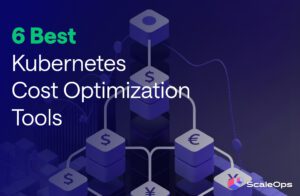When it comes to node-level resource management, most platforms make you give up Karpenter. But you shouldn’t have to walk away from the cluster autoscaler you already trust.
That’s why we’re announcing the general availability of Karpenter Optimization on the ScaleOps Platform, with support for AWS and Azure.
Karpenter was built to provision nodes quickly and efficiently. With Karpenter Optimization, ScaleOps takes it further, enhancing Karpenter so that it provisions the right nodes for each workload, at the lowest cost. What was once a mechanical provisioning task becomes a strategic lever for performance and efficiency.
Why Karpenter Needs Help in Production
Karpenter is a widely adopted cluster autoscaler, but unoptimized configurations create critical gaps in production.
Instance Type Sprawl
Provisioners require your team to pick instance families and sizes from the entire AWS EC2 catalog. That means constant tradeoffs: should you use m6i.xlarge or r5a.xlarge today in us-east-1a? Karpenter won’t migrate you to newer generations automatically, so clusters often remain stuck on older, more expensive hardware. Over time, this compounds into higher on-demand rates, worse price/performance, and lost access to the most efficient options.
Disruption Without Strategy
Consolidation is one of Karpenter’s most powerful features, but without the right context, it operates blindly. Nodes may be drained during peak traffic, stateful workloads disrupted mid-operation, or latency spikes introduced during rollouts. Some teams disable it altogether, leaving savings on the table. Others risk aggressive churn at the worst possible times.
What Karpenter Optimization Solves
Instance Type Optimization
ScaleOps automatically selects the best families, generations, and sizes based on the pods running in your cluster. One click can replace inefficient nodes, and ScaleOps continuously keeps you on the most cost-efficient mix. It uses the AWS EC2 Fleet API to launch an optimized blend across availability zones and instance types. All configuration stays in your cluster, with no extra cloud permissions required.

Disruption Policy Optimization
Node consolidation is a powerful feature in Karpenter, but most teams are hesitant to use it due to stability concerns. ScaleOps adds control. You can set disruption timing, off-hours, gradual rollout, or custom schedules, capturing savings without introducing unnecessary risk.
UI for Karpenter
We built a simple, sharp UI that surfaces inefficiencies in your Karpenter configuration. You’ll see exactly where resources aren’t aligned, and with a single action, you can optimize them.

The Bigger Picture
Karpenter Optimization is a fit if you’re:
- Running Karpenter today and see allocatable resources far from requested CPU or memory
- Delaying node consolidation due to disruption risk
- Migrating to Karpenter and want quick savings without risky changes
- Stuck on older instance generations and want better price-to-performance
Karpenter Optimization moves Kubernetes closer to what it should be: a self-driving platform that follows your intent. ScaleOps runs self-hosted in your clusters and is the only platform leveraging the AWS EC2 Fleet API to keep you on the most efficient mix across zones and types.
You keep the cluster autoscaler you trust, gain real intelligence, and open the path to full cloud resource automation, where the platform manages resources in real-time and every workload gets the right capacity, at the right cost, without disruption.























